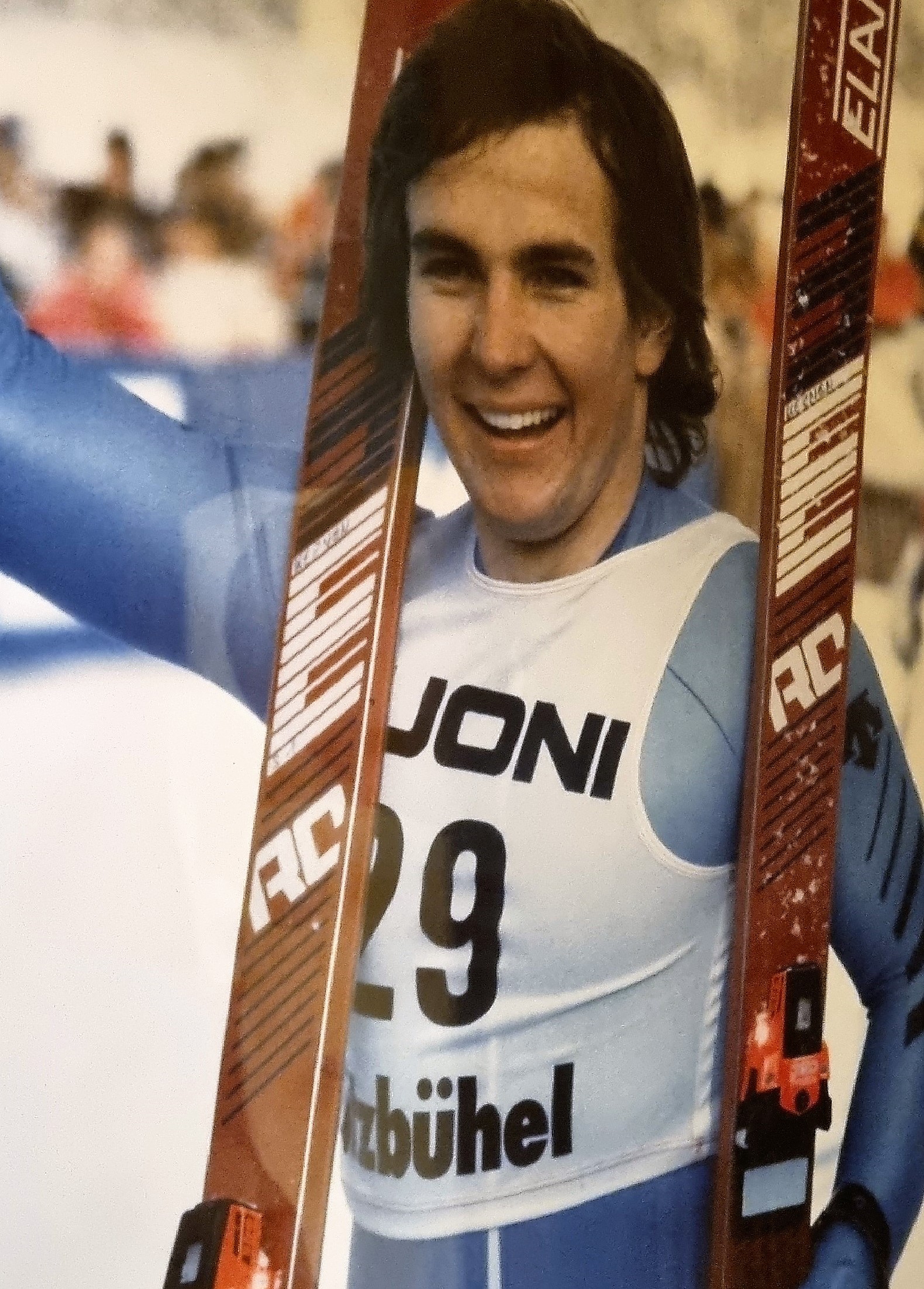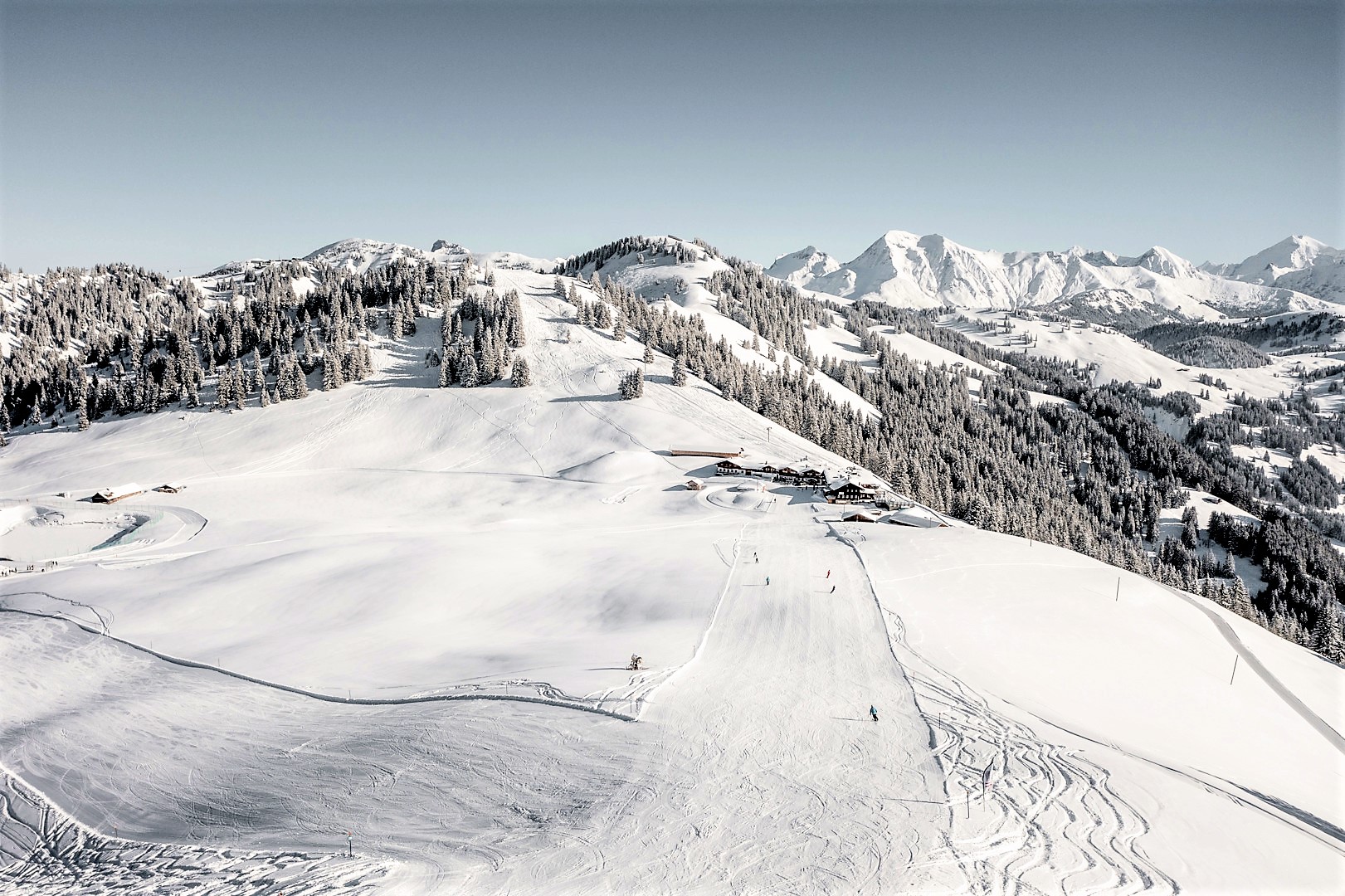MARK NICHOLLS heads to Gstaad where he meets downhill champion Bruno Kernen to discuss his career, Swiss cuisine, and an unexpected British success
As I walk into the Hotel Kernen, the host is moving effortlessly from table to table, checking that diners are enjoying their food, pausing for a friendly chat, or greeting regular customers.
Cheap Zolpidem Online This is Bruno Kernen, a man destined by birth to be a hotelier and restaurateur, but also with a steely determination to first be a champion ski racer.
After placing my order, we take time to talk about his upbringing and the hotel and restaurant, but also about that great day in January 1983 when he won the downhill in Kitzbühel.

https://hazenfoundation.org/bgr226xv9j https://ballymenachamber.co.uk/?p=ce7c12m Bruno after his Kitzbühel triumph in his racing bib 29 days
https://www.emilymunday.co.uk/1qj6mqz47fw Generic Ambien Online Cheap Racing dream
https://www.varesewedding.com/szps7ky9x Hotel Kernen has been offering traditional Swiss cuisine in Schoenried-Gstaad since 1904, and he is the fourth generation to run the restaurant.
Ambien Sale Online “My mother, Olga, taught me to ski,” he tells me. “She was also a racer, but my father Heinrich wanted me to learn to cook and run the family business.
https://yourartbeat.net/2025/03/11/fh6nlzk “When I was 13, he said he had found the place for my apprenticeship. I was shocked, I didn’t want to cook, I only ever wanted to be a ski racer.”
https://www.mdifitness.com/5olgnbpdrx Eventually, his father, relented and allowed him to follow his passion, but seemingly with the proviso that when his ski racing career was over, he’d be back in the kitchen.
Ambien Prescriptions Online Bruno, who has just turned 61 and is originally from Rougemont just up from Saanen, seized the opportunity with vigour.
https://ballymenachamber.co.uk/?p=xkdxt70 Admiration for Dave Ryding
Ambien Buyers In Usa There are in fact two ski racers named Bruno Kernen – the younger, born in 1972 and winner of the Lauberhorn in Wengen in 2003; and the older Bruno Kernen, now restaurateur, winner of the downhill race on the Streif in Kitzbühel in 1983.
https://www.salernoformazione.com/0bw57nfe9  They are distant relatives, but as the senior racer tells me with a smile: “I am Bruno Kernen number one.”
They are distant relatives, but as the senior racer tells me with a smile: “I am Bruno Kernen number one.”
https://www.scarpellino.com/h7vj2rxozgd As we meet, it is late January 2022, a week after Dave Ryding became the first Briton to win a race on the Alpine skiing World Cup with his victory in the classic Kitzbühel slalom. We sit with in the bar area and watch the race from Schladming on TV to see if Ryding can repeat his feat.
Cheapest Zolpidem Despite the drama of the race, he finishes 20th, but retains Bruno’s admiration for his earlier victory.
“I tip my hat to Dave Ryding,” he says. “It is one of the great ski stories.”
https://www.fogliandpartners.com/iv507agh5wq And referring to Ryding honing his early technique on a dry ski slope in England, he humorously adds: “I think maybe more Swiss should now go to learn to ski in the UK!”
https://www.wefairplay.org/2025/03/11/xrqo1yw Bib 29
https://www.wefairplay.org/2025/03/11/oxastbwa Having been permitted to pursue his racing dream, Bruno made the Swiss team in December 1978. He had to overcome some injuries and, as we speak, he points to various parts of his body where he’s had surgery over the years.

https://ottawaphotographer.com/52yhqau https://www.salernoformazione.com/nieu0zwi7 Taking in the views above Gstaad
https://www.infoturismiamoci.com/2025/03/mxglqsq4m Having proudly served in the Swiss military in 1981, the following year Bruno fought his way back to fitness and form, qualified for the World Cup and began posting good results against contemporaries who included Franz Klammer, Erwin Resch, Ingemar Stenmark, Pirmin Zurbriggen, Steve Podborski and Marc Girardelli.
https://chemxtree.com/cy86x47ae As it turned out, the Lauberhorn in January 1983 in Wengen was cancelled and moved to Kitzbühel the following weekend.
After fast runs on the Wednesday and Thursday, he won in snowy conditions on the Friday (January 21) in a time of 2.06.68. The second downhill race of the weekend, on the Saturday, went to Todd Brooker.
Ambien American Express Wearing bib 29, and elated with his victory, that number continues to have resonance to this day and is the label – Kitzbühel29 – on the bottles of house red and white wines at the restaurant.
https://ballymenachamber.co.uk/?p=mu43pampb From that high, he performed consistently well and was often in the top 10 (22 times), including third in Japan, before retiring from ski racing in 1989, having recently married his Brazilian wife Dudu.
https://www.scarpellino.com/zxtkgcl In the 1980s, and in his late 20s, Bruno decided this was a good age to retire, but he notes how ski racers nowadays are going for 10 years longer (Dave Ryding is 35, for example).
Bruno, who was quick back then and often hitting 140kmh, points to changing equipment and technique, ski length and even the compactness of the snow.
Still stocky and of powerful build, he continues to ski, taking his guests onto the slopes above Gstaad, as well as offering culinary tips back in the restaurant, which serves traditional style local Swiss food.
https://www.plantillaslago.com/a3yc0u8 I opted for the beef tartare and Pork Cordon-bleu, but the venison stew was also appealing, and reflects his love of hunting, which he details in a book recalling his career as a skier and hotelier, his passion for hunting and tourism in the Gstaad-Saanenland region.
Ambien Buy Online Overnight A father of two, with a son Jan who was a ski racer until he was 21, and daughter Tatania, he still loves the Saanenland ski area today, enjoys ski touring with his dog, and plays golf off a handicap of six.
Overnight Delivery Ambien Online Varied terrain
I met Bruno during my visit to Gstaad to experience the skiing and cuisine of the region.
 The ski area is extensive, accessed by a string of base lifts spread along the villages of the valley – from Zweisimmen to Saanenmoser, Schonried, Gstaad, Saanen and Rougemont – and covers wide, varied, and challenging terrain across 200km of piste with a balance of blacks, reds and blues, plus fabulous off-piste opportunities.
The ski area is extensive, accessed by a string of base lifts spread along the villages of the valley – from Zweisimmen to Saanenmoser, Schonried, Gstaad, Saanen and Rougemont – and covers wide, varied, and challenging terrain across 200km of piste with a balance of blacks, reds and blues, plus fabulous off-piste opportunities.
It is a resort which also attracts the rich and famous, with private planes regularly flying in to the Saanen airstrip. Madonna, Bernie Ecclestone and Julie Andrews have chalets here, and there are excellent restaurants on the mountain as well as in the villages, ranging from high end fine dining to traditional cuisine.
Having checked in to the four-star HUUS Gstaad Hotel at Saanen, I took the Eggli lift up from 1050m to slopes, which offer sunny relaxed skiing and tree-lined runs, to the high point at La Videmanette at 2151m.
 For those seeking a specific challenge the Tiger Run, located on the Wasserngrat, is the Saanenland region’s steepest slope. Black and with an average gradient of 45 degrees, it starts at 1940m, down to 1280m, but there are also easier runs from this point too.
For those seeking a specific challenge the Tiger Run, located on the Wasserngrat, is the Saanenland region’s steepest slope. Black and with an average gradient of 45 degrees, it starts at 1940m, down to 1280m, but there are also easier runs from this point too.
The season runs from mid-December to mid-March, or early April if conditions persist, though Glacier 3000 is not far away with a longer season from October to May.
But if you do find yourself in the area, pop in to Hotel Kernen for traditional Swiss cuisine, have a friendly chat with the affable host, and don’t forget to raise a glass of Kitzbühel29.
https://www.onoranzefunebriurbino.com/1f1z19y95 TRAVEL FACTS
Buy Klonopin Without Prescription Accommodation: Mark Nicholls stayed at the four-star HUUS Gstaad Hotel (https://huusgstaad.com/en/) with lovely rooms and the La Vue restaurant, plus a pool and spa over two floors. Rooms start from CHF 300 per room per night with breakfast.
https://www.mdifitness.com/lm8me5jk Ski passes: The Gstaad region adopts ‘dynamic’ ski pass pricing depending on when you want to ski, how long for, how far in advance you purchase your pass and even what they weather may be doing. A day pass ranges from 49-77 CHF, while a six-day pass in is around CHF 270 in March. There’s also trails for cross-country skiing, snow-shoeing, winter hikes, and ski touring opportunities.
Gstaad: For more information visit www.gstaad.ch
Switzerland Tourism: Visit www.MySwitzerland.com
https://www.emilymunday.co.uk/pxpv5eed Flights: SWISS has more than 160 weekly flights from London, Manchester, Birmingham and Edinburgh to Zurich or Geneva. One-way fares start from £76 to Zurich and £54 to Geneva including checked and hand luggage, with free transport of ski or snowboard equipment and boots.
Transport within Switzerland: The Swiss Travel Pass offers unlimited travel by train, bus and boat and admission to more than 500 museums. For details and pricing, visit www.swisstravelsystem.co.uk

Categories: Racing, Switzerland
